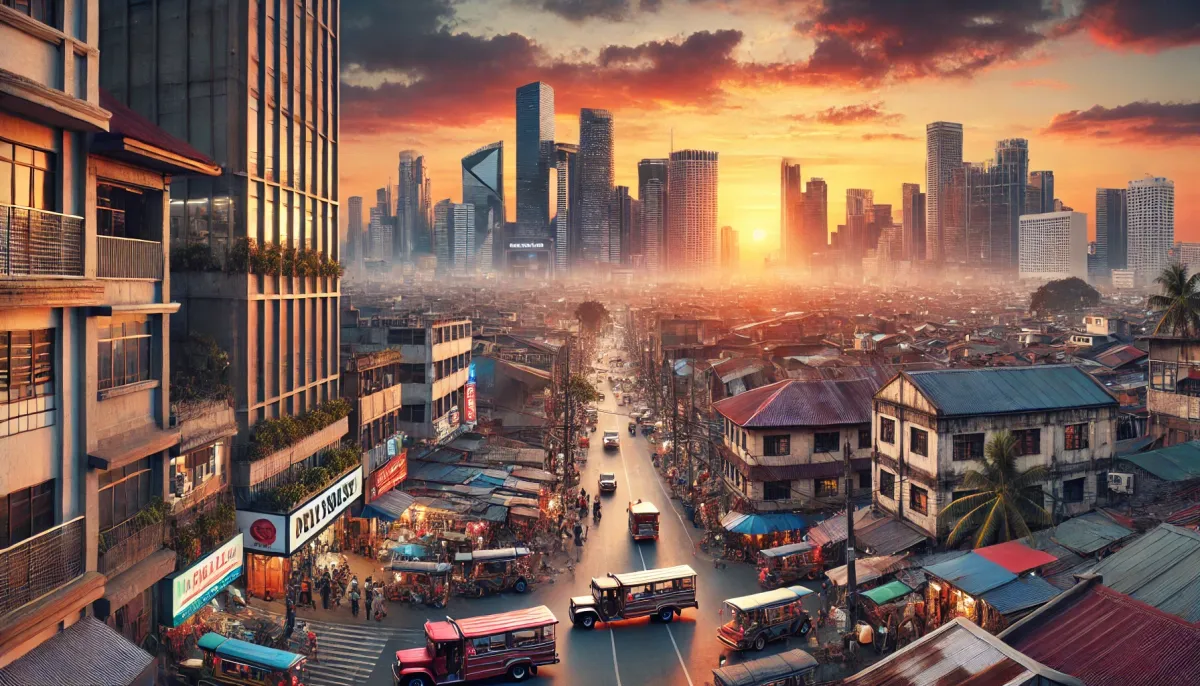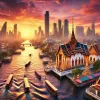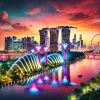Manila, the bustling capital of the Philippines, often dubbed the "New York of Asia," pulses with an energy that captivates and overwhelms. From its gleaming skyscrapers reaching for the heavens to the vibrant street life teeming below, this city offers a sensory feast unlike any other. As an American backpacker who's explored numerous Asian cities, I found Manila to be a truly unique and unforgettable experience. I highly recommend fellow Western travelers to add this dynamic metropolis to their Asian adventure itinerary.
A City of Contrasts
Manila's charm lies in its striking juxtapositions. The city boasts a modern financial district reminiscent of Manhattan, with high-end malls and luxury hotels catering to a sophisticated crowd. Yet, just a stone's throw away, you'll encounter sprawling shantytowns, a stark reminder of the deep socioeconomic divides that exist. This contrast is what makes Manila so compelling – a city where opulence and poverty coexist, creating a complex and fascinating urban landscape.
Navigating the Urban Jungle
The sheer density of Manila is immediately apparent. With a population density rivaling that of Shanghai but packed into a much smaller area, Manila presents a unique urban experience. The Makati Central Business District, the Philippines' financial hub, is a testament to the city's rapid modernization. Towering skyscrapers dominate the skyline, creating a breathtaking panorama. Nearby, Bonifacio Global City offers a more polished and upscale environment, with wider streets and green spaces. These areas are a world away from the crowded streets of Tondo, the city's largest and most impoverished district.
| District | Character | Atmosphere |
|---|---|---|
| Makati CBD | Financial center, bustling, high-end | Energetic, sophisticated |
| Bonifacio Global City | Upscale, modern, spacious | Polished, luxurious |
| Tondo | Densely populated, impoverished, historic | Gritty, vibrant |
A Tapestry of History and Culture
Manila's rich history is etched into its streets and buildings. The city bears the imprint of Spanish, American, and Chinese influences, creating a unique cultural blend. Intramuros, the historic walled city, offers a glimpse into the Spanish colonial past, while Binondo Chinatown, one of the oldest in the world, showcases the enduring legacy of Chinese merchants and traders. The city's architecture reflects this historical tapestry, from the Spanish colonial buildings of Intramuros to the American-era Manila City Hall.
Facing Nature's Fury
Manila's location in the Pacific Ring of Fire and its position in the path of numerous typhoons make it particularly vulnerable to natural disasters. The city regularly faces typhoons, floods, earthquakes, and even volcanic eruptions. The looming presence of Taal Volcano, a small but active volcano just south of the city, serves as a constant reminder of nature's power.
More Than Just a City
Manila is more than just a bustling metropolis; it's a testament to human resilience. It's a city that has endured colonial rule, wars, and natural disasters, yet continues to thrive. It’s a city of contrasts, where extreme wealth and poverty exist side by side. It’s a city with a rich history and a vibrant culture. And it’s a city that I, as a seasoned traveler, wholeheartedly recommend experiencing.







